In this article, we are going to tell you everything about the ballet tutu dress. In addition to pointe shoes, the tutu is another of the most characteristic garments of ballet. But this did not always exist. As ballet was perfected, ballet costumes adapted to these changes. That is why the clothes used in the origins of ballet are very different from those used today.

Table of Contents
What is a ballet tutu dress?
The ballet tutu dress is the typical skirt worn by classical ballet dancers, usually the skirt and bodice ensemble. They aren’t used in class but rather as clothing for performances. If you’re going to wear a tutu in a presentation, you should practice with it before as it takes some getting used to, especially if you dance with a Partenaire.
The male dancers have to get used to dancing with the ballerinas in a tutu. So, the rigid tutu creates a space between the dancers and limits their vision of the supporting leg. It is also common for it to cause a setback such as the locker rooms of both getting stuck somewhere.
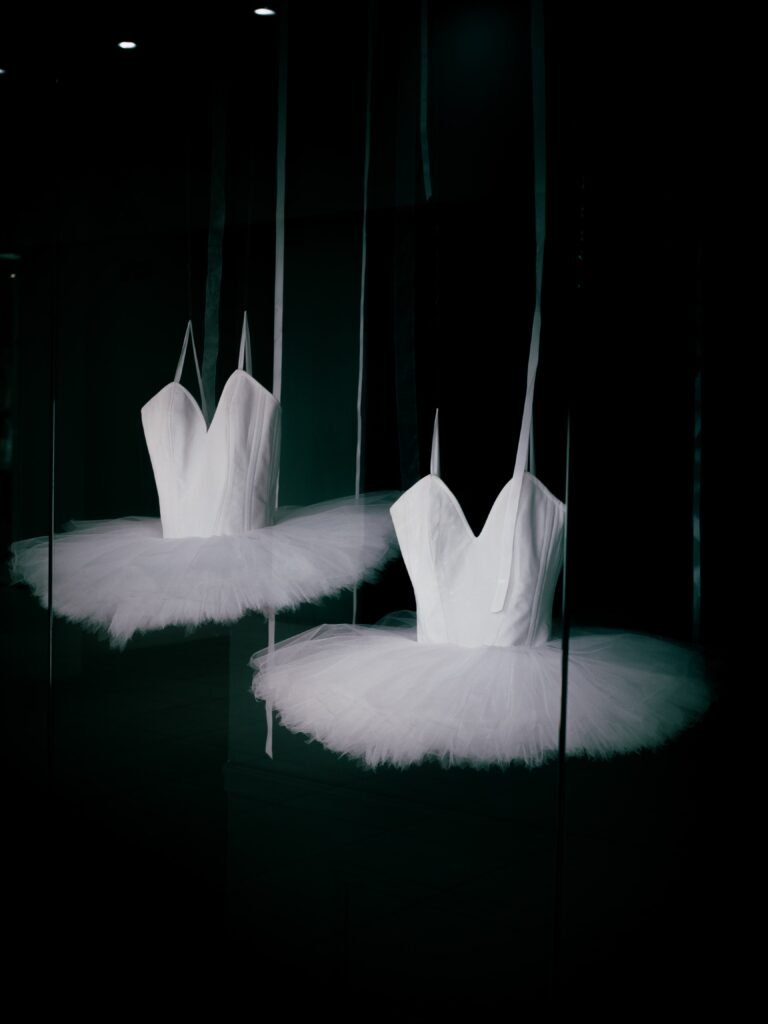
Why are they called tutu?
The French voice “tutu” came into use at the end of the 19th century. Its origin is uncertain. Some affirm that it was formed from the reduplication of “tu”, a familiar way of referring to tulle. This, in turn, takes its name from Tulle, the Gallic city where this fabric was made, widely used in the making of these skirts. Another hypothesis proposes that it was created from the alteration of “cucu”, a child reduplication of cul, ‘bottom’ because this part of the body was what the public seated in the seats closest to the stage saw at times.
History of Ballet Tutu Dress
The ballet costumes that you usually see are the result of a process that started in the fifteenth century. The clothing used at that time was very different from today. Why did these changes occur? A crucial factor was the organization of the dancers on stage. The social structure of the countries in which ballet developed was also influential. We can divide the history of ballet into different periods according to the dance style and the theme of the works presented. Each of these periods had a characteristic costume.
The ballet in the Italian and French courts
In case you didn’t know, the ballet was born in the Italian courts in the 15th century. At that time, ballet accompanied social events. This type of dance was called “balletti”. From this Italian word derives the word “ballet”.
In the 16th century, the Italian courts began to decline. But in France, a form of government called absolute monarchy was born. These kings loved art, so they decided to encourage ballet.
But these shows took place in large rooms, which were used for banquets, too. Besides, the stages weren’t in an elevated position as they are today. And the dancers were the members of the royal family, the courtiers and some professional dancers. The dancers didn’t wear special costumes to dance. They used court suits, street shoes and some props to identify certain characters. For example, masks and wigs.
The birth of theatrical ballet
In the seventeenth century, ballet underwent big changes. Although the “court ballet” still existed, the dance became professional. This means that the dancers would no longer be members of royalty but professional dancers. From that moment, the dance began to be performed in theatres, as a public spectacle and not only in courts. On the other hand, the ballet split from the opera until it becomes an autonomous show.
In the middle of the 18th century, the “ballet d’action” emerged in Europe. And what is “ballet d’action”? It is a narrative choreographic show whose plot unfolds through dance and pantomime. An explanation sung or recited as before was no longer necessary. As a consequence of this, ballet became much more expressive. But to achieve that expression and freedom of movement, it was necessary to eliminate long skirts, wigs and masks. This time also coincides with the appearance of the first ballet stars. For example, Marie Sallé (1707-1756), Marie Anne Camargo (1710-1770), and Barbara Campanini (1721-1799).
The dance corps dancing together and the advances in ballet technique also began to gain importance. The dance evolved from “horizontal to vertical”, developing jumps and pirouettes. Then, the dancer skirts are shortened to show the movements of the legs.
Who was the first person to wear a ballet tutu dress?
During Romanticism, ballet began to focus on the ballerina. These will become an object of idolatry and the feminine ideal of beauty of the time. It is the time of the great female soloists such as Maria Taglioni (1804-1884). The two most famous works of this period were: La Sylphide (1832) and Giselle (1841), both premiered at the Paris Opera. La Sylphide, choreographed by Filippo Taglioni, music by Jean Schneitzhoeffer and libretto by Adolphe Nourrit, inaugurates the period of romantic ballet.
Maria Taglioni, the protagonist, played a supernatural creature (a sylph) who is inadvertently loved and torn apart by a mortal, the young Scotsman James. She was the dancer who wore the first ballet tutu dress in 1832. At first, more than a tutu, it was a long skirt decorated with stones and ribbons. It was actually clumsy, so it wasn’t as comfortable as you might expect for the dance.
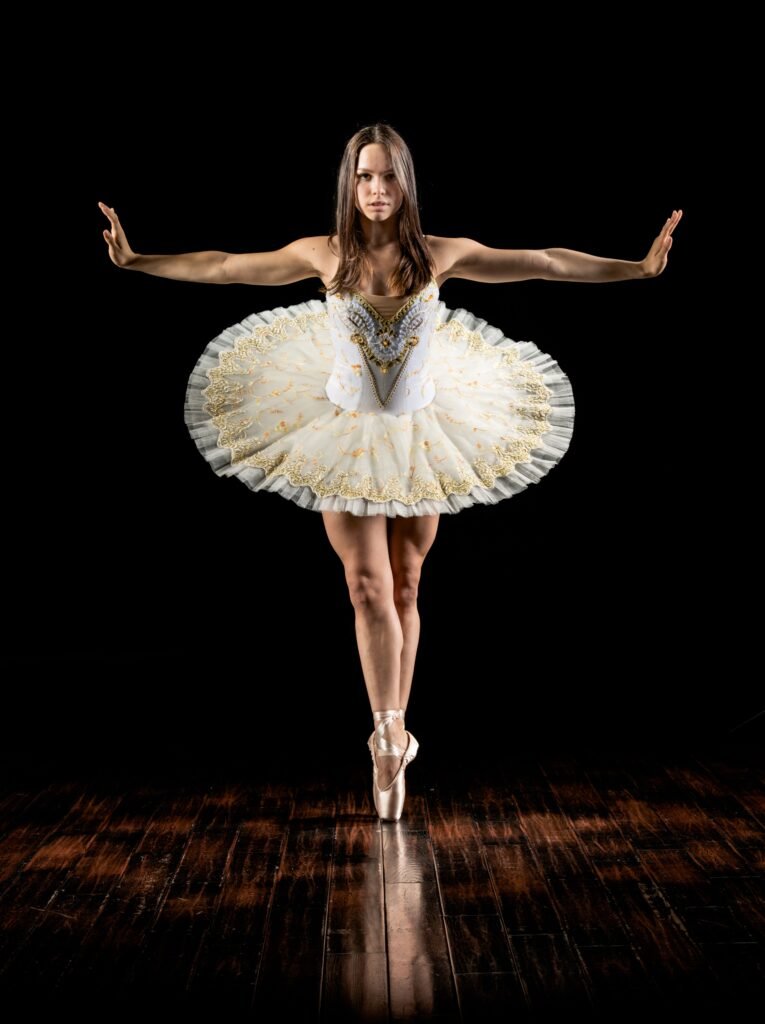
Romantic tutus in Giselle
As for Giselle, a ballet with choreography by Jean Coralli and Jules Perrot, music by Adolphe Adam (1803-1856) and libretto by Théophile Gautier (1811-1872) and Jules-Henri Vernoy de Saint-Georges (1799-1875), it meant the consecration as a dancer of the first order of its protagonist, the young Carlotta Grisi. This work takes place in two well-differentiated acts. First, it takes place in the earthly world and is part of everyday life. And the second takes place in the supernatural world.
On the other hand, Giselle imposed the Romantic Tutu. This costume is composed of a bodice and a skirt. In this case, the tutu is long, reaching below the knee, up to the middle of the calf. And it’s made of several layers and airy fabrics that allow light to pass, such as tulle, chiffon, muslin or organdy. The bodice, fitted to the body, leaves the neck and arms bare. On the back, they usually add tiny wings (also made of tulle or gauze) that complete the characterization of the characters (fairies, sylphs, etc.).
It is important to note that these changes in the dancer costumes go together with the evolution of the dance technique. At this time, the position of the feet in en dehors goes from 90º to 180º. This favoured the execution of increasingly higher jumps, a wider opening of the legs and the development of consecutive pirouettes in increasing numbers.
Why did tutus get shorter?
At the end of the 19th century, French rule fell into decline, and the rise of Russia started. Saint Petersburg began to welcome renowned dancers, choreographers and teachers, most of them French. But the arrival of Marius Petipa (1818-1910) in Saint Petersburg marked a definitive change in the history of ballet. The French Petipa arrived in Russia in 1847, hired as the company’s principal dancer. And a decade later, he would serve as its dance teacher, achieving a very high level of preparation both in the soloists and the dance corps. In addition, men return to regain prominence. From the joint work with the Tchaikovsky came their famous trilogy: Sleeping Beauty (1890), The Nutcracker (1892) and Swan Lake (1895).
This is how ballet perfected more and more, achieving great virtuosity. In connection with the virtuous technique developed by Russian dancers of this time, the tutu of female dancers was shortened even more. Around 1870 in France, the dancers wore one up to the knees (tutu bell). And in Russia, they used a shorter one, at the level of the hips and flat as a plate (tutu plate, imperial, classic or Italian), very similar to the current ones. Swan Lake (1877) was the first ballet in which dancers wore this short tutu.
The Russian Ballets of the 20th Century
It is the time of the First World War and the Russian Revolution. The Russian Ballets were born in this context, directed by Sergei Diaghilev (1872-1929), a businessman. Diaghilev merged all the arts, incorporating numerous artists (composers, set designers, librettists). The company’s most famous creations, choreographed by Mikhail Fokine (1880- 1942) were: The Death of the Swan (1905), the Polovtsian Dances (from the Prince Igor opera, 1909), The Sylphs or Chopiniana (1909), The Firebird and Scheherazade (both 1910), Petroushka and The Spectrum of the Rose (both 1911).
After the triumph of the Ballets Russes in Paris, there was a change in the ballet costumes. Fokine and the Russian designer Leo Bakst (1866-1924) introduced bold colours and an oriental flair (particularly in the Scheherazade ballet). They also incorporated tights, tunics and other costumes that coexisted with the traditional tutus (romantic for Les Sylphides, classics for Sleeping Beauty from 1921, for example).
Diaghilev’s death meant the end of the company but not the end of his contributions to the dance world. The influence of the Ballets Russes reached many countries around the western world. During the Second World War, many Russian dancers migrated to foreign countries. And this influence continues to this day.
What are the different styles of ballet tutus dresses?
Generally, professional ballet tutu dresses are expensive because of the large amount of fabric they carry and their accessories (feathers, jewels, lace, etc.). But today, you can also find plainer and cheaper models. There are also many ballet tutus for girls. Below we discuss the most popular types of tutus.
Romantic Ballet Tutu
We can see this type of tutu in romantic ballets like Giselle or Les Sylphides. The romantic tutu skirt is long, about the three-quarter length or above the ankle. Also, it’s airy, light and ethereal. So, it usually has 3-6 layers of soft tulle.
We can find two types of romantic tutus. On the one hand, we have the tutus with longer skirts that cover a large part of the torso. And on the other hand, those in which the skirt sits at the waist.
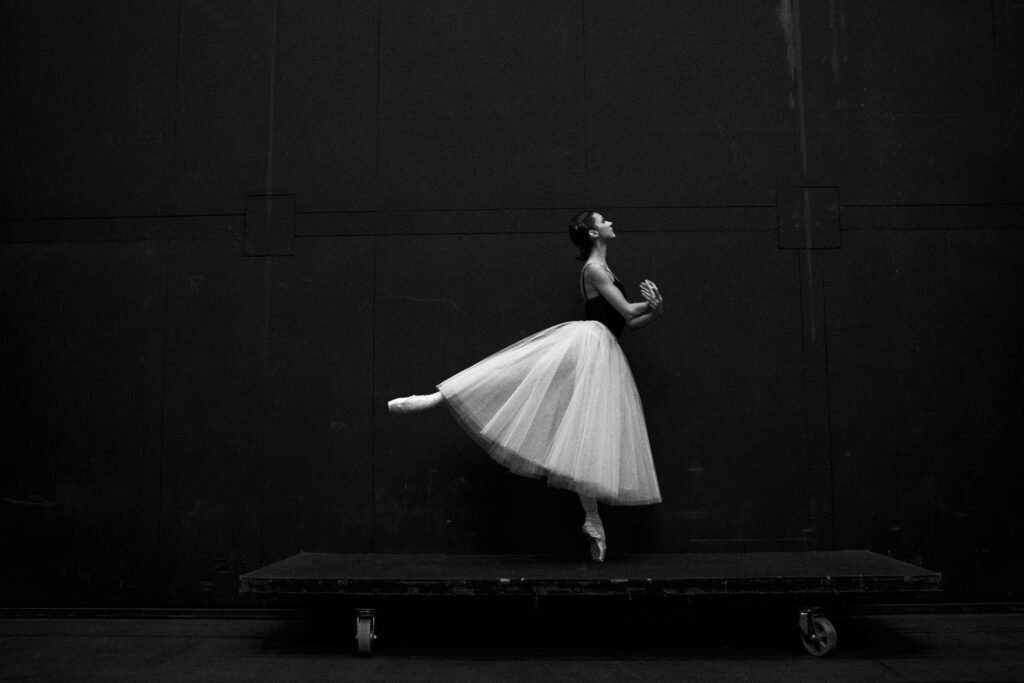
Classical Tutu
We have also mentioned it in the origins. So, it emerged as a variation of the romantic tutu as the pointe shoe technique increased. Also, this is the most famous type of tutu.
The classic tutu is more rigid. And its length is almost the same as that of the rest of the models. Besides, there are two types of classic tutu: on the one hand, the one that consists of many layers of tulle. And on the other hand, we have the “bell” tutu that is slightly longer and doesn’t have the typical rigid hoop shape as in the previous one.
Balanchine Tutu
It is also known as powder puff tutu or “Karinska” as a way of honouring the name of its Russian-born designer Barbara Karinska. The structure is very similar to the classic tutu. But it doesn’t have as many layers as in the previous case. And the skirt has a much softer and more natural look and fall.
This tutu is much lighter than the pancake or platter. The fact of not having rigid rings between layers allows a delicate movement of the skirt, accompanying each movement of the dancer.
Pancake Tutu
This is another type of classic tutus. It comes straight from the hips and is a short dress, with several layers of tulle and supported by a metal hoop.
This confection makes the tutu bounce at each movement of the dancer. Added to this is the shortness of the skirt. For this reason, it is usually accompanied by an inner cover in the form of panties.
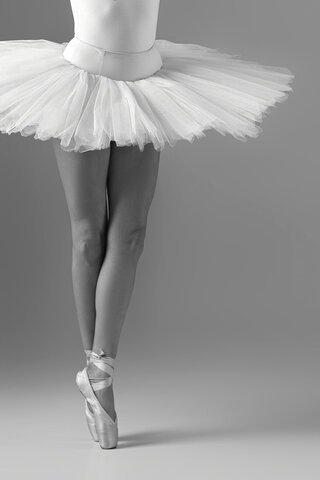
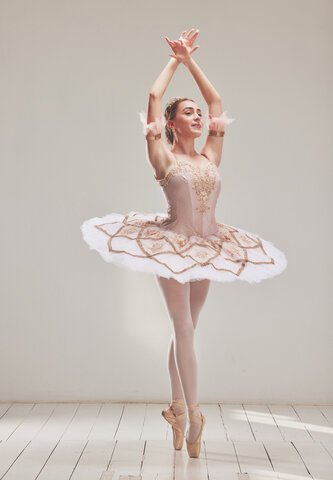
Platter Tutu
This tutu is very similar to the pancake tutu. However, it sits at the dancer’s waist, forming a rigid structure like a plate. The upper part of the skirt is usually decorated instead of the pleats of the pancake tutu.

Leave a Reply